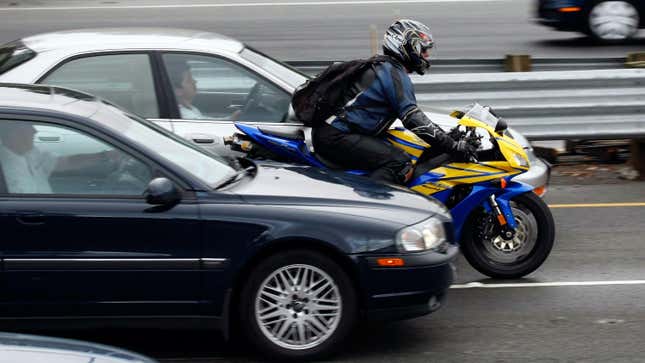
Despite the many advances in modern automotive technology, the forward collision mitigation systems on cars, SUVs and pickup trucks still struggle to detect vehicles that aren’t also cars, the IIHS reports based on new data. Automatic emergency braking and front collision warning systems have a hard time identifying semi trucks and motorcycles, which results in more crashes with those kinds of vehicles.
Let’s get right into the meat of the study:
Today’s systems reduce rear-end crash rates with medium or heavy trucks by 38 percent and rear-end crash rates with motorcycles by 41 percent, compared with a 53 percent reduction in rear-end crash rates with other passenger vehicles, an IIHS study of more than 160,000 crashes found. The same discrepancy is seen with the surrogate vehicle targets that IIHS and other organizations use to evaluate system performance, another study demonstrated.
“These reductions are impressive for all vehicle types, but the safety benefits could be even larger if front crash prevention systems were as good at mitigating and preventing crashes with big trucks and motorcycles as they are with cars,” said Jessica Cicchino, IIHS vice president of research.
How much better could more comprehensive front-collision warning systems be? Well, the IIHS estimates that better technology could prevent 5,500 crashes with semi trucks and 500 crashes with motorcycles each year.
This isn’t just a technology problem. Humans historically have a tough time spotting motorcyclists on the road because our brains are wired to look for two headlights, not one. We’re also prone to making some poor guesses at how fast big trucks can slow down or speed up.
The IIHS has noticed the problem, and it intends to implement some new vehicle-to-vehicle crash tests rather than simply running crash tests with rigid barriers. Offering a more diverse set of obstacles means the IIHS will have a more comprehensive understanding of how any specific car can handle confrontations with all types of vehicles.
You can read more about the IIHS’ findings and its plans for the future here.







